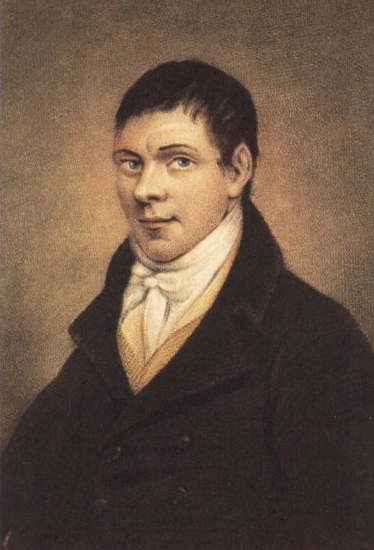Search Results - Dwyer, Michael
Michael Dwyer
 Michael Dwyer (1 January 1772– 23 August 1825) was an insurgent captain in the Irish Rebellion of 1798, leading the United Irish forces in battles in Wexford and Wicklow. Following the defeat and dispersal of the rebel hosts, in July 1798 Dwyer withdrew into the Wicklow Mountains, and to his native Glen of Imaal, where he sustained a guerrilla campaign against British Crown forces.
Michael Dwyer (1 January 1772– 23 August 1825) was an insurgent captain in the Irish Rebellion of 1798, leading the United Irish forces in battles in Wexford and Wicklow. Following the defeat and dispersal of the rebel hosts, in July 1798 Dwyer withdrew into the Wicklow Mountains, and to his native Glen of Imaal, where he sustained a guerrilla campaign against British Crown forces.The failure in July 1803 of the rising in Dublin planned by Anne Devlin, his cousin, and by Robert Emmet, with which he had hoped to coordinate, and the internment of virtually all his extended family, disposed "the Wicklow chief" to accept terms. With his closest lieutenants he was transported to New South Wales, Australia as an un-sentenced exile and free man in 1806. In Sydney in 1807, he was twice imprisoned and twice tried, but ultimately acquitted, of plotting an Irish insurrection against the British rule in New South Wales. As a result of the Rum Rebellion in 1808, he was reinstated as a free man in New South Wales. He was appointed Chief of Police in Liverpool, Sydney in 1813. In May 1825 due to the alleged non-payment of a £100 debt, he was committed to a debtors' prison where he contracted dysentery. He was released on 24 May 1825. Just three months later he died on 23 August 1825 at the age of 53, never having seen his four youngest children since leaving them in Ireland.
In 1898 his remains were re-interred in Waverley Cemetery, Sydney. A crowd of over 200,000 attended the re-interment of Michael Dwyer. On the monument erected to Michael Dwyer at Waverley Cemetery, Sydney, are inscribed the names of Irish patriots, including Wolfe Tone, (Protestant), Lord Edward Fitzgerald, (Protestant), The Rev William Jackson (journalist) (Anglican), William Orr (United Irishman) (Protestant), Michael Dwyer (Catholic) and dedicated to those of all religions sharing in the love of Ireland. Michael Dwyer's large monument at Waverley Cemetery, Sydney, is of white Carrara marble, intricately decorated with sculptures, plaques, inscriptions, medallions and mosaic and topped with a 30-foot carved cross, the monument was built to be a testament to Ireland's struggle for self-government and its patriots who fought in the rebellion. The memorial is the largest monument to the 1798 Irish rebellion in the world. Provided by Wikipedia


